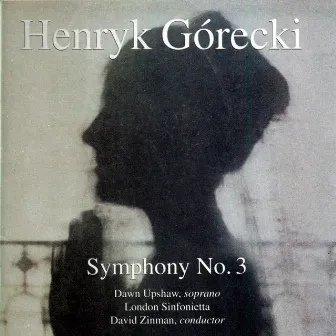Performance
Monthly Listeners
Current
Followers
Current
Streams
Current
Tracks
Current
Popularity
Current
Listeners 138,037
Top Releases
View AllBiography
Henryk Górecki was that rarity among contemporary composers: the originator of a full-fledged hit. A recording of his Symphony No. 3 by the London Sinfonietta with soprano Dawn Upshaw climbed to the top of the British pop charts in the early '90s. Górecki was among the Eastern European composers for whom contemporary stylistic trends (first serialism and then the various reactions against it) took on anti-authoritarian overtones, and who thus emerged in the forefront of late 20th century music; in his works, stylistic originality seemed a personal and political necessity. Górecki was born in 1933 in the small town of Czernica in the Silesia region of Poland. He was trained as a primary-school teacher, and did not formally become a composer until the age of 22 when he enrolled at the State Higher School of Music in Katowice. He studied in Paris for a time and became acquainted with the leading edge of the Western avant-garde. The works of Webern, Stockhausen, and Messiaen were unavailable in Poland, suppressed by socialist-realist doctrines; but all of them, especially Messiaen, influenced Górecki's early music. Górecki became a professor at Katowice and went on to gain some official acceptance, ascending to the post of provost. Górecki's music was always deeply rooted in Polish ideals, however, and it carried a sense of the emotional impact of the atrocities of the Second World War. He ran afoul of the authorities in the late '70s, resigning his post as provost to protest the government's refusal to permit Pope John Paul II to visit Katowice. He later composed music to honor an injured Solidarity labor union activist. What gave his protests additional weight was that he had rejected Western hyper-modernism and created a new musical language that more directly served his ideals. Górecki had first gained recognition with Scontri (1959), a work very much of the avant-garde in its treatment of sonority and texture as primary structural elements. In the 1960s, however, Górecki's music offered harbingers of the eclecticism that would dominate contemporary music by the century's end. Genesis shows minimalist qualities, while Three Pieces in the Old Style manipulates modal and whole tone ideas, and Lerchenmusik quotes Beethoven, to name a few examples. Górecki became interested in the folk music of his native region and investigated Polish music of the Medieval and Renaissance eras. In 1976 he synthesized the new trends in his music with the Symphony No. 3, subtitled "Symphony of Sorrowful Songs." Scored for soprano and orchestra, this hour-long piece contains three movements, quoting old religious and folk texts and incorporating folk tunes. It opens with a canon in the strings that builds gradually over a 12-minute span, with an effect comparable to that of Western minimalist composition but proceeding from different spiritual bases. (One of the animating principles of Górecki's work was a fervent Roman Catholicism.) The work was recorded several times, but it was the 1993 release that caught fire -- partly because it fit perfectly with the new and well-marketed trend toward "holy minimalism." Despite his growing success, Górecki continued to compose largely in response to inner creative dictates rather than according to any plan to increase his reputation. Much of his work in the 1980s and 1990s has been in the choral and chamber genres; the String Quartet No. 1, Op. 62 ("Already It Is Dusk"), was written for the Kronos Quartet, a successful U.S. ensemble devoted to new music, and further enhanced his reputation. The work used a Renaissance part-song as raw material, transforming it first into a dissonant but peaceful chorale and then into a folk-inflected dance. At the time of his death, in November 2010, he had just completed his Symphony No. 4 and was awaiting its premiere.













